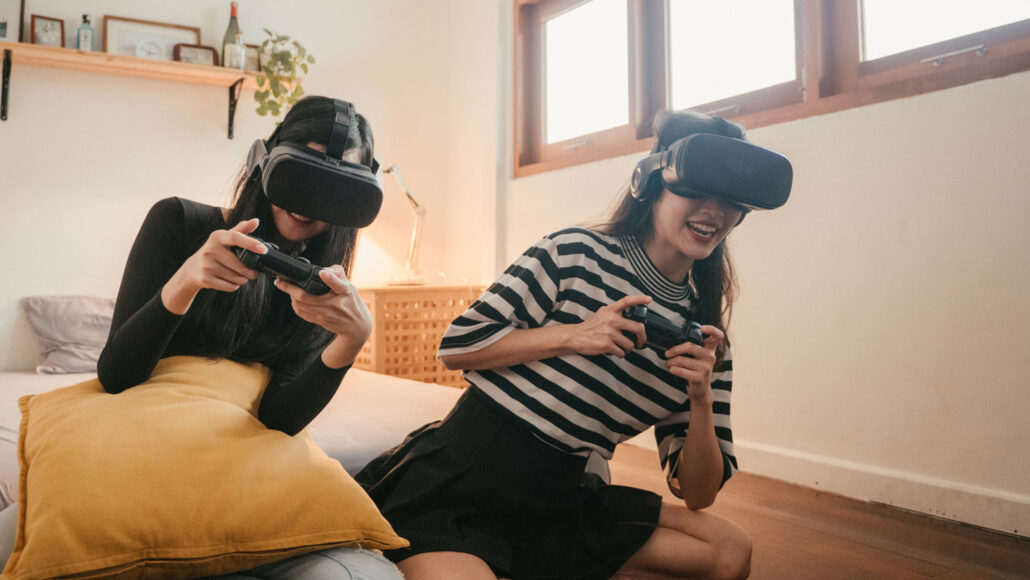2-D: Short for two-dimensional. This term is an adjective for something in a flat world, meaning it has features that can be described in only two dimensions — width and length.
3-D: Short for three-dimensional. This term is an adjective for something that has features that can be described in three dimensions — height, width and length.
angle: The space (usually measured in degrees) between two intersecting lines or surfaces at or close to the point where they meet.
lens: (in optics) A curved piece of transparent material (such as glass) that bends incoming light in such a way as to focus it at a particular point in space. Or something, such as gravity, that can mimic some of the light bending attributes of a physical lens.
perception: The state of being aware of something — or the process of becoming aware of something — through use of the senses.
sophisticated: A term for something that is advanced, complex and/or elegant.
virtual: Being almost like something. An object or concept that is virtually real would be almost true or real — but not quite. The term often is used to refer to something that has been modeled by (or accomplished by) a computer using numbers, not by using real-world parts. So a virtual motor would be one that could be seen on a computer screen and tested by computer programming (but it wouldn’t be a three-dimensional device made from metal). (in computing) Things that are performed in or through digital processing and/or the internet. For instance, a virtual conference may be where people attended by watching it over the internet.
virtual reality: A three-dimensional simulation of the real world that seems very realistic and allows people to interact with it. To do so, people usually wear a special helmet or glasses with sensors.
wave: A disturbance or variation that travels through space and matter in a regular, oscillating fashion.








